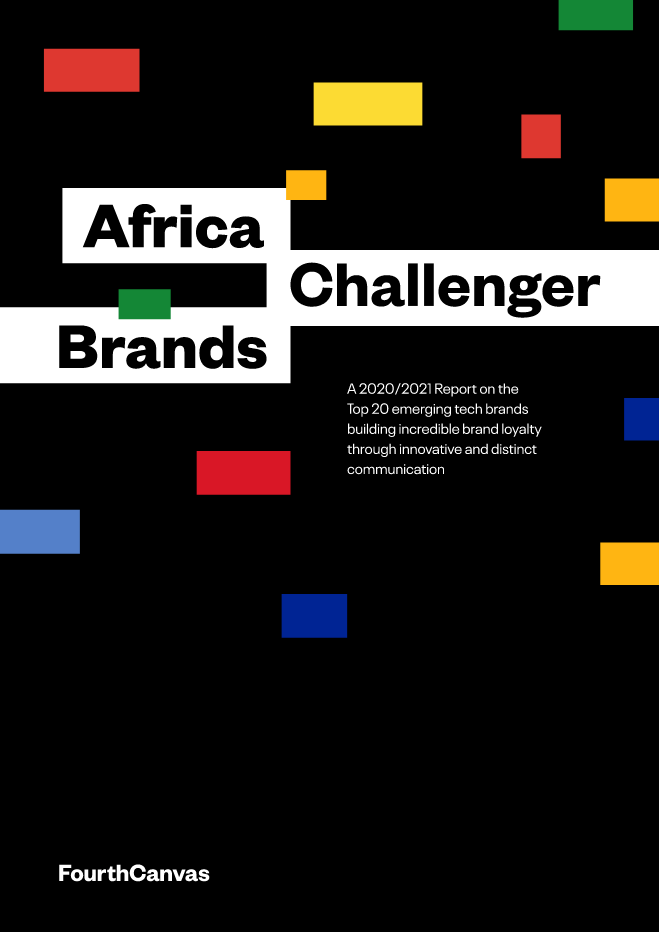6 things we learned from FourthCanvas’ Africa Challenger Brands report
Last week, Fourth Canvas, a digital marketing agency based in Nigeria released a report on the challenger brands remaking the bran-customer relationship in Africa.

Last week, FourthCanvas, a brand-centric strategy and design agency. based in Nigeria released a report on the challenger brands remaking the brand-customer relationship in Africa. The report has gathered rave reviews with one social media reader referring to it as a “beautiful and insightful body of work.”
@FourthCanvas this is a beautiful and insightful body of work. Way to go 🎉 pic.twitter.com/3xaaMfI82f
— Ogunsanya Oyeleye (@leyeConnect) August 14, 2021
It’s not just social media readers who are reading it though. According to the FourthCanvas team, within the first week, the report was read by over 700 C-level managers, founders, growth, and marketing heads of startups, and established brands.
Since the mid-20th century, brands have sought to have a deeper relationship with their customers—one that goes beyond the transactional relationship we often share with most service providers.
While traditional African brands have tried and largely failed at cultivating these relationships, new-age tech brands seem to be bucking the trend. Armed with social media and genuine concern for customer satisfaction, these brands are fostering new kinds of relationships with their customers.
The brands chosen as the top 20 in the report were judged along four (4) lines:
- Ingenious storytelling: how well the brands stay human by telling stories that are consistent with their brand narrative.
- Brand tribe: the ability of these brands to make fans out of customers.
- Brand experience: the quality of their visual and verbal expressions at all touchpoints
Notable data points from the report include:
- 70% (14) of the brands in the top 20 were Nigerian
- 55% (11) of the brands were finance/fintech companies
Asides from notable data points, the report also left a few key points that will be crucial for the next wave of challenger brands to learn from. Here are a few lessons we learned from the African Challenger Brands report:
Driving conversations key to driving growth
Far from the old days of rote, recurring content, modern brands are using conversations to drive engagements with their audience. These brands immerse themselves in ongoing conversations their users are having, helping them to create a more relatable persona.
Allowing users to share their stories via brand channels is one way that brands have hacked this. By giving users a platform to share their stories, they signal to other users and observers that they are customer-driven.
Challenger brands are building through the power of community:
Community-building has recently become a trendy part of brand building. After all, own a brand’s community often doubles as an advocacy arm, spreading the good news of the brand through word-of-mouth.
Top brands have learned to harness the power of community building, creating tribes among their users by constantly engaging them through different media channels.
Strategic partnerships are key to building a remarkable brand:
Partnerships have always been a valuable part of brand building, and these companies are excelling in it. The most successful brands are able to secure partnerships that align with their brand goals, and most importantly— help them achieve their vision.
We’ve seen this happen with Flutterwave’s partnership with the Basketball Africa League which seeks to establish the brand as a truly pan-African one. BitSika’s partnership with Davido also helped the Ghanaian company gain a foothold in the Nigerian market.
Employees can be ambassadors too
No, this is about hiring a salesperson and giving them branded tees to wear to work every day. As company culture becomes a more popular concept with companies, many startups are looking to hire employees that can embody their vision and mission. With the top brands, there is a consistent pattern of empowering their employees to talk openly about their job and the company they work for. According to the report, empowering employees to be ambassadors helps communicate the company’s work culture and supports word-of-mouth marketing.
Showing customers behind the scenes
Showing customers what goes on behind the scenes is a great way for brands to build a connection.
New-age brands use it as a way to help customers get a deeper understanding of their work process. It’s a great way to both humanise the brand and carry out customer education.
Connect to a bigger cause:
The biggest brands always connect themselves to a bigger cause. With Tesla, it is about helping to reduce the carbon footprint of humankind. Nike wants to help people perform better physically.
With the brands from the ACB report, the pattern continues. Many of them are connecting themselves to larger causes. For instance, Paystack is building technologies to help African businesses grow. Patricia is building a gateway to crypto for everyday people hence it’s branding as the world’s easiest crypto exchange.
Apart from having a missions statement with an aspirational feel, these companies also connect to the causes of their users. An example of this is their participation in the Endsars protests of 2020.
Conclusion
Technology brands are redefining the way companies engage their users. They are leveraging new tools to communicate with users in a way they understand. The result of this is that these companies are growing loyal communities, as opposed to mere customers.
Interested readers can find the African Challenger Brands Report here.







Comments ()